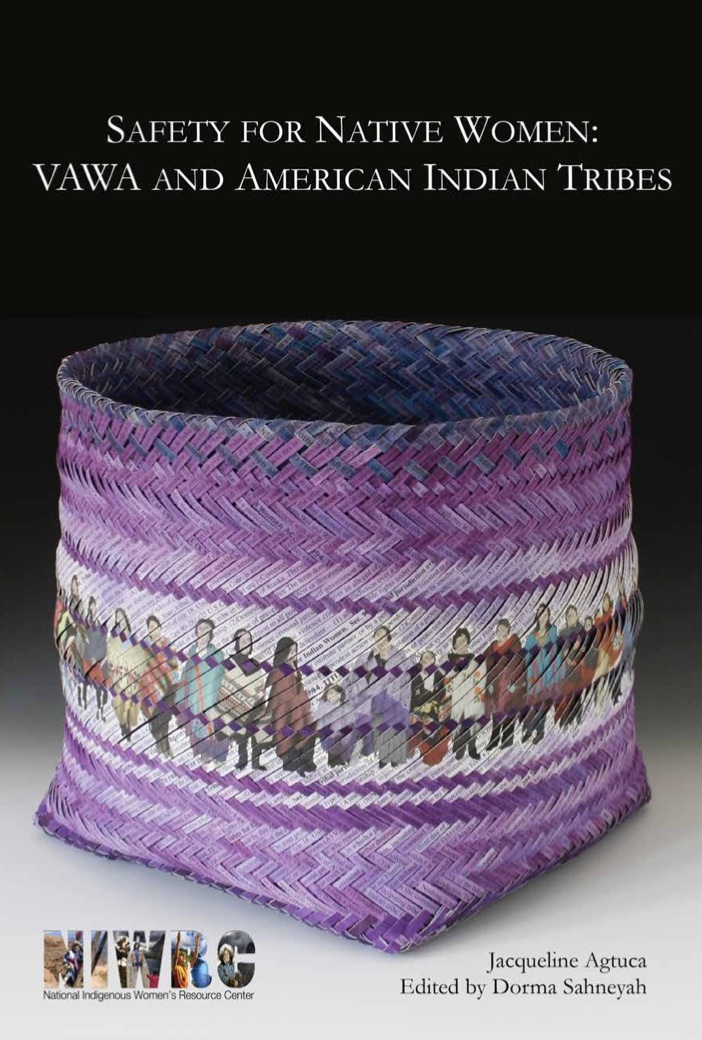Safety for Native Women: VAWA and American Indian Tribes
Resource Book Continues to Provide Tribal Insight into the Violence Against Women Act
In October 2014, NIWRC released a resource book to provide the perspective of the tribal grassroots movement on the significance of the Violence Against Women Act (VAWA). To date, the book has sold close to 3,000 copies and continues to be used widely by Indian tribes, advocates, movement conferences, and colleges and universities. The Safety for Native Women: VAWA and American Indian Tribes serves as a primary resource for understanding the tribal provisions of VAWA.
“Many people do not realize that prior to the reauthorization of VAWA in 2005 the Act did not have a tribal title. There was no specific tribal provision in VAWA,” said Dorma Sahneyah, Director, Technical Assistance and Training, NIWRC. “The Safety for Indian Women Act, Title IX of VAWA, was historic in establishing the purposes, consultation mandate, the tribal unit and deputy director for tribal affairs, and other important provisions. It became part of VAWA because of the tremendous efforts of Indian tribes and the tribal grassroots movement— and strong support from our non-Indian allies.”
no specific tribal provision in VAWA,” said Dorma Sahneyah, Director, Technical Assistance and Training, NIWRC. “The Safety for Indian Women Act, Title IX of VAWA, was historic in establishing the purposes, consultation mandate, the tribal unit and deputy director for tribal affairs, and other important provisions. It became part of VAWA because of the tremendous efforts of Indian tribes and the tribal grassroots movement— and strong support from our non-Indian allies.”
VAWA is celebrated as landmark federal legislation that fundamentally changed the response of the United States to violence against women. “While the impact of VAWA on the federal and state governments is often discussed, the relationship of VAWA to Indian tribes is not. We also have a VAWA story to share,” said Lynn Hootch, Executive Director, Yup’ik Women’s Coalition. “We use the resource book at our trainings and regional conferences to familiarize our tribal leaders, advocates, and others with the VAWA tribal provisions and our history as a movement.”
Through this publication, NIWRC hopes to increase the awareness of the VAWA tribal provisions, the impact of VAWA upon the response of Indian tribes to such violence, and to shed light on legal barriers to the safety of Native women that remain unaddressed. Most importantly, the book provides an overview and history of the development of the tribal grassroots movement for the safety of Native women.
“Our goal is to provide readers with a greater understanding of the complex political relationships in which the epidemic of violence against Native women is rooted, how it developed over time, and how it continues in America today,” said Lucy Simpson, Executive Director, NIWRC. “In particular, this book provides a tribal perspective that united a national movement to increase the safety of Native women.”
Safety for Native Women: VAWA and American Indian Tribes was authored by Jacqueline Agtuca, Editor, Restoration, and edited by Dorma Sahneyah. To place a bulk order, contact us at vawa-book@niwrc.org. Individual book orders can be made at amazon.com here.





